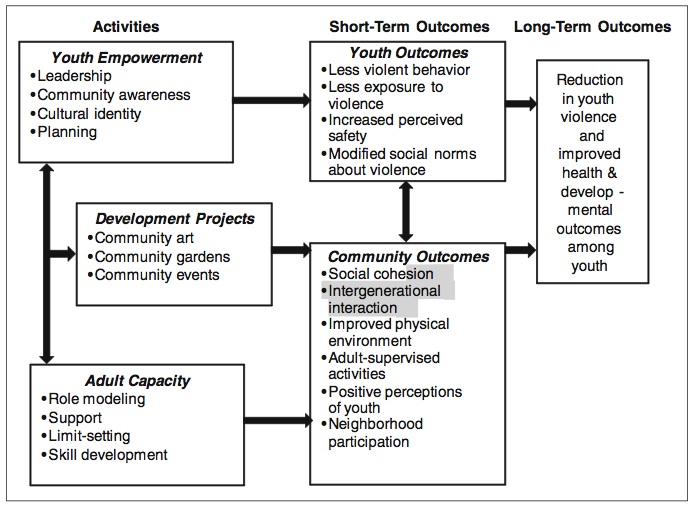Youth empowered to prevent violence
The traditional prevention program paradigm treats its audience as the object of the intervention. For example, professionals provide a curriculum to help youth avoid sexual violence and dating violence. However, a transformative prevention program supports youth to become “agents of change”; they are not the “targets” of the intervention but they are the part of the solutiom” to the problem.
Prevention efforts like Men of Strength Clubs, Start Strong programs and STAND & SERVE are just a few examples of prevention programs that adopt this approach. I was pleased to see the recent article, Youth Empowerment Solutions for Peaceful Communities: Combining Theory and Practice in a Community-Level Violence Prevention Curriculum that highlights an afterschool program curriculum that engages youth to take action to prevent violence.
The article highlights a youth curriculum that focused on community change. I find the change model to be instructive (see below): it works with youth, community and adults’ capacity to work with youth.
How does your prevention effort work to empower youth?
Below is the full abstract and details about this article.
Youth Empowerment Solutions for Peaceful Communities: Combining Theory and Practice in a Community-Level Violence Prevention Curriculum.
Zimmerman MA, Stewart SE, Morrel-Samuels S, Franzen S, Reischl TM. Health Promotion Practice 2010; ePublished November 8, 2010.
Click here for the article on the journal’s web site.
(Copyright © 2010, Sage Publications)
This article describes the development and evaluation of an after-school curriculum designed to prepare adolescents to prevent violence through community change. This curriculum, part of the Youth Empowerment Solutions for Peaceful Communities (YES) program, is guided by empowerment and ecological theories within a positive youth development context. YES is designed to enhance the capacity of adolescents and adults to work together to plan and implement community change projects. The youth curriculum is organized around six themed units: (a) Youth as Leaders, (b) Learning about Our Community, (c) Improving Our Community, (d) Building Intergenerational Partnerships, (e) Planning for Change, and (f) Action and Reflection. The curriculum was developed through an iterative process. Initially, program staff members documented their activities with youth. These outlines were formalized as curriculum sessions. Each session was reviewed by the program and research staff and revised based on underlying theory and practical application. The curriculum process evaluation includes staff and youth feedback. This theoretically based, field-tested curriculum is designed to be easily adapted and implemented in a diverse range of communities.


David,
thank you for always being ahead of the game in our field! Our target population are our agents of change. They are the ones changing norms. STAND & SERVE members of all ages understand the problem including why and design, implement, evaluate and sustain the solution. We are launching THE GUTS TO BE GOOD initiative January 17th to cultivate safety, equality and respect as norms. Good Times. Happy New Year. We truly love you David Lee.